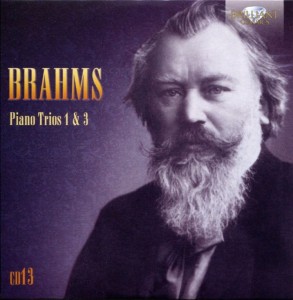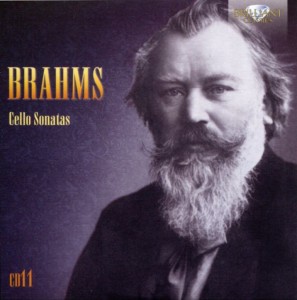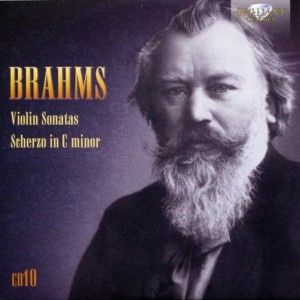I could listen to this again, and likely will.
I’ve always enjoyed trios (piano, violin, cello). Those particular instruments blend well together.
This is just nice, soothing, intriguing music that pulls me in and compels me to keep listening.
The musicians on today’s CD are the Gutman Trio, which consists of:
Sviatoslav Moroz violin
Natalia Gutman cello
Dmitri Vinnik piano
The compositions are:
Piano Trio No. 1 in B Op. 8
According to its entry on Wikipedia:
The Piano Trio in B major, Op. 8, by Johannes Brahms was composed during 1854. The composer produced a revised version of the work in 1889. It is scored for piano, violin and cello, and it is the only work of Brahms to exist today in two published versions, although it is almost always the revised version that we hear performed today. It is also among the few multi-movement works to begin in a major key and end in the tonic minor; another being Mendelssohn’s Italian Symphony.
Brahms was 21 when he first composed this music, and 56 when he revised it.
Piano trio No. 3 in C minor Op. 101
According to its entry on Wiki:
The Piano Trio in C minor, Op. 101, by Johannes Brahms is scored for piano, violin and cello, and was written in the summer of 1886 while Brahms was on vacation in Hofstetten, Switzerland. It was premiered on 20 December of that year by Brahms, violinist Jenő Hubay, and cellist David Popper.
There are still a lot of competing notes for my tastes. But these compositions are exquisite.
I particularly liked Movement II (“Scherzo: Allegro molto”) from Piano Trio No. 1 in B Op. 8, and Movement I (“Allegro energico”) from Piano Trio No. 3 in C minor Op. 101.
Of the two compositions, I think I liked Piano Trio No. 1 better than No. 3. The first one seemed more melodic and introspective to me.
Brahms was 53 when he composed this piece of music.



